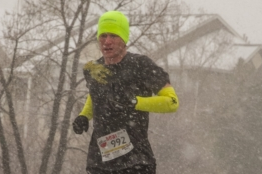The London Marathon starts in less than 48 hours and aside from Eliud Kipchoge giving the course another shot, the big storyline is Jacob Kiplimo, the current half-marathon world record holder, making his marathon debut. For the purposes of this post, there are three numbers that I’m focused on: 56:42, 5.2%, and 4%. 56:42 is Kiplimo’s time in the half-marathon. I’ll get to the second two numbers momentarily.
Kipchoge proved in 2019 that covering 26.2 miles in under two hours is possible. The question since then has been whether someone can do that in a race and thus have a ratified time of under two hours.
London will be Kiplimo’s first marathon. Just because somene is an exceptionally good half-marathon racer does not guarantee they’ll succeed at 26.2. Winning one of the world’s fastest races in a first attempt is daunting in itself. Doing so in a world-record time is even tougher. Achiving a time that some still question as being attainable? That’s a third layer of difficulty. In that vein, and because the temperatures could be a tad bit on the warm side on Sunday, I will not predict a sub-two finishing time. But, the numbers may be there for him, even if it not on Sunday.
Haile Gebrsellasie, the distance GOAT in my mind, held a marathon personal best of 2:03:59 and a half-marathon personal best of 58:55. His marathon time is basically two 1:02 half splits, which are 5.2% slower than his half-marathon personal best. Shalane Flanagan, one of the U.S.A.’s greatest distance runners, held a marathon personal best of 2:21:14 and a half-marathon personal best of 1:07:51. Her fastest marathon splits into 1:10:37 per half, or 4% slower than her half-marathon personal best.
If you take Kiplimo’s 56:42, add 5.2%, and then multiply that by two, you get 1:59:17 over 26.2. If you use the same formula but plug in Flanagan’s 4%, you get 1:57:56. In fact, Kiplimo could run almost 6% slower (5.8% to be exact) to achieve a 1:59:59.
Many factors will impact finishing times on race day: weather, the pacers, how the athlete reacts to other runners, their own preparation, and how they are feeling. Kipchoge, one of the most consistent performers of all time, started running marathons in 2013, solidified himself as a major force in 2015, and didn’t get his first marathon world record until the fall of 2018. That’s all to say that the odds of Kiplimo cruising through the finish line in one-something are low. Could he do it eventually? The numbers suggest it’s in his favor.
Sources used:
https://en.wikipedia.org/wiki/Haile_Gebrselassie
https://en.wikipedia.org/wiki/Shalane_Flanagan
https://en.wikipedia.org/wiki/Eliud_Kipchoge
https://www.letsrun.com/

